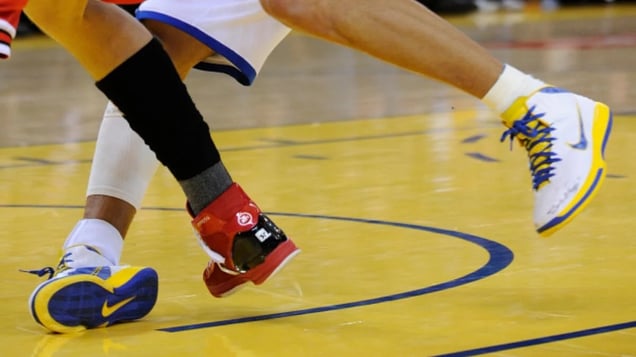Brief Summary
Garrett S. Bullock, PT, DPT, Tyler Ferguson, MSc, Jake Vaughan, MS, Desiree Gillespie, MCSP, Gary Collins, PhD, and Stefan Kluzek, MRCP, MSc, DPhil
As the postseason commences in the NBA, we turn our attention to some of the challenges faced by practitioners working with elite basketball players. Professional basketball entails intense physical contact, involving frequent instances of landing and pivoting at significant velocities. Athletes in this discipline often compete for up to 48 minutes per game, covering distances ranging from 4.8 to 8.1 kilometres each match over the course of an 82-game regular season. Due to its demanding nature and extensive schedule, professional basketball experiences elevated injury rates in comparison to collegiate and amateur levels. The National Basketball Association (NBA) estimates losses of $300 million per season due to injuries resulting in time loss. Given the substantial impact of NBA injuries, stakeholders in basketball are actively engaged in injury prevention efforts. The aim of this research was to describe the incidence of injuries, the severity of injuries, and illnesses among NBA athletes over a 10-year period.
Through publicly available data, this study found that a total of 1369 players participated in the NBA from 2008 to 2009 through the 2018 to 2019 seasons. Of these players, 41% were guards, 38% were forwards, and 21% were centers. These players played a total of 302,018 player games, and a total of 5375 injuries and illnesses were recorded. Overall, 66% of players sustained an injury during the reporting period. The injury incidence was 15.60 injuries per 1000 athlete game exposures (AGEs). The greatest injury incidence was to the ankle (2.57 injuries/1000 AGEs), followed by the knee (2.44 injuries/1000 AGEs), groin/hip/thigh (1.99 injuries/ 1000 AGEs). Guards suffered the highest injury/illness incidence with 18.17 per 1000 AGEs, with centres just behind at 18.16 injuries or illnesses per 1000 AGEs. The overall injury and illness incidence ranged from 13.54 injuries or illnesses per 1000 AGEs (2008-2009 season) to 21.68 injuries or illnesses per 1000 AGEs (lockout-shortened 2012 season).
Ankle and knee injuries showed the highest incidence rates, consistent with previous studies. Ankle injury rates were slightly lower, but knee injury rates were slightly higher than previously reported. Ankle injuries were mostly slight or minor, aligning with prior findings that over 50% of basketball ankle injuries result in less than a week of time loss, with many players not seeking medical treatment. Despite being mostly minor, ankle injuries can still lead to reduced proprioception and balance, increasing the risk of future injuries. Conversely, severe knee injuries can significantly impact joint integrity and athletic performance. Athletes with substantial knee injuries often experience decreased strength and jumping ability. Only 78% of basketball players return to play after an anterior cruciate ligament injury, with many experiencing reduced performance post-return. These findings underscore the importance of focusing on ankle and knee injury prevention in basketball programs, with particular attention to the potentially more severe and long-term consequences of knee injuries.

For medical and sports science practitioners, these findings emphasize the importance of understanding an athlete's strength profile and the associated injury risks. Incorporating an objectified, normalized approach, KT360 has the ability to screen and monitor a range of injury-specific protocols, which can help practitioners better understand an athlete's readiness to perform. If you would like to learn more about how KangaTech can help your organization measure strength and mitigate injury risk, please contact info@kangatech.com
https://journals.sagepub.com/doi/full/10.1177/23259671211004094
